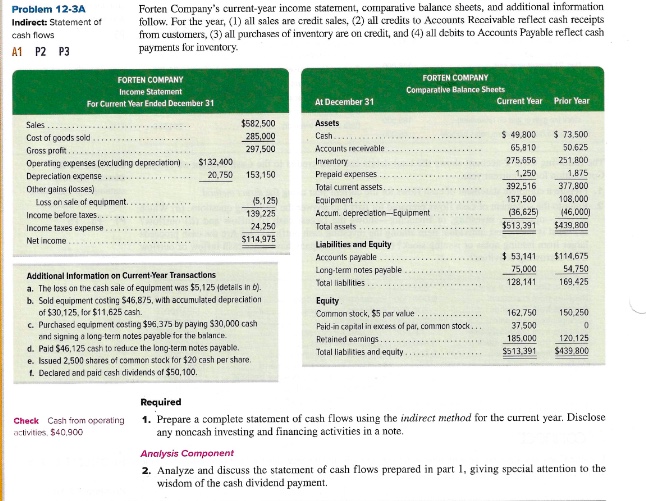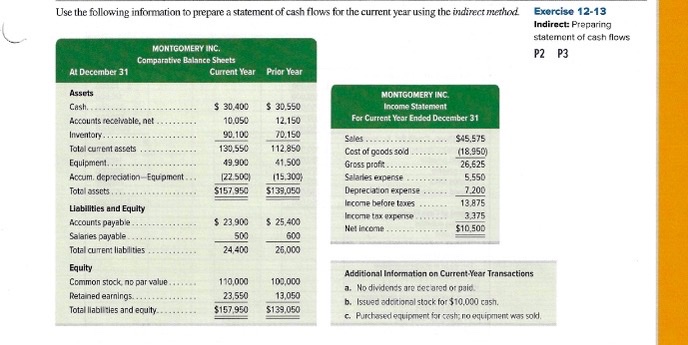Question
1. Cash flow from Operations: Start with Income statement - reverse all non-cash losses/expenses (e.g. depreciation) and non-cash gains/revenues (accrued revenue) Go to comparative balance


1. Cash flow from Operations:
Start with Income statement - reverse all non-cash losses/expenses (e.g. depreciation) and non-cash gains/revenues (accrued revenue)
Go to comparative balance sheets. Find the differences between Current Assets Year to Year, then Current Liabilities Year to Year. Apply the below:
Decreases in current assets are added to net income. Increases in current assets are subtracted from net income.
Increases in current liabilities are added to net income. Decreases in current liabilities are subtracted from net income.
This gives you cash flow from Operations.
2. Cash flow from Investing. Go to Long-term Assets, look at how they were acquired/disposed over the year. Did you use cash or make cash from a sale? Apply accordingly (add or subtract).
3. Cash flow from Financing. Go to Long term Liabilities look at how they were affected by cash. Did you use cash or make cash from a sale? Apply accordingly (add or subtract). Go to Equity accounts. Same process, generated cash or expensed cash.
Now take your starting cash position, add/subtract Operating, Investing, and Financing cash activity - this is your final cash position.
Problem 12-3A Indirect: Statement of cash flows A1 P2 P3 Forten Company's current-year income statement, comparative balance sheets, and additional information follow. For the year, (1) all sales are credit sales, (2) all credits to Accounts Reccivable reflect cash receipts from customers, (3) all purchases of inventory are on credit, and (4) all debits to Accounts Payable reflect cash payments for inventory. Additional Information on Current-Year Transactions a. The loss an the cash sale of equipment wos $5,125 (details in b). b. Sold equipment costing $46,875, with accumulated depreciation of $30.125, for $11,625 cash. c. Purchased equipment costing $96,375 by paying $30,000 cash and signing a long-term notes payable for the balance. d. Paid $46,125 cash to reduce the lang-term notes poyable. e. Issued 2,500 shares of commen stock for $20 cash per share. 1. Declared and paid cash dividends of $50,100. Required Check Cesh from opcrating activities. $40,900 1. Prepare a complete statement of cash flows using the indirect method for the current year. Disclose any noncash investing and financing activities in a note. Analysis Component 2. Analyze and discuss the statement of cash flows prepared in part 1 , giving special attention to the wisdom of the cash dividend payment. Use the following information to prepare a statement of cash flows for the current year using the indinect method. Exercise 12-13 Indirect: Preparing statement of cash flows P2 P3 Additional Information on Current-Year Transactiens a. Mo dividends are cec arod or paid. b. Issued adcitional stock for $10,000 eash. c. Punchwed equipment for ceshy no equipment was soldStep by Step Solution
There are 3 Steps involved in it
Step: 1

Get Instant Access to Expert-Tailored Solutions
See step-by-step solutions with expert insights and AI powered tools for academic success
Step: 2

Step: 3

Ace Your Homework with AI
Get the answers you need in no time with our AI-driven, step-by-step assistance
Get Started


